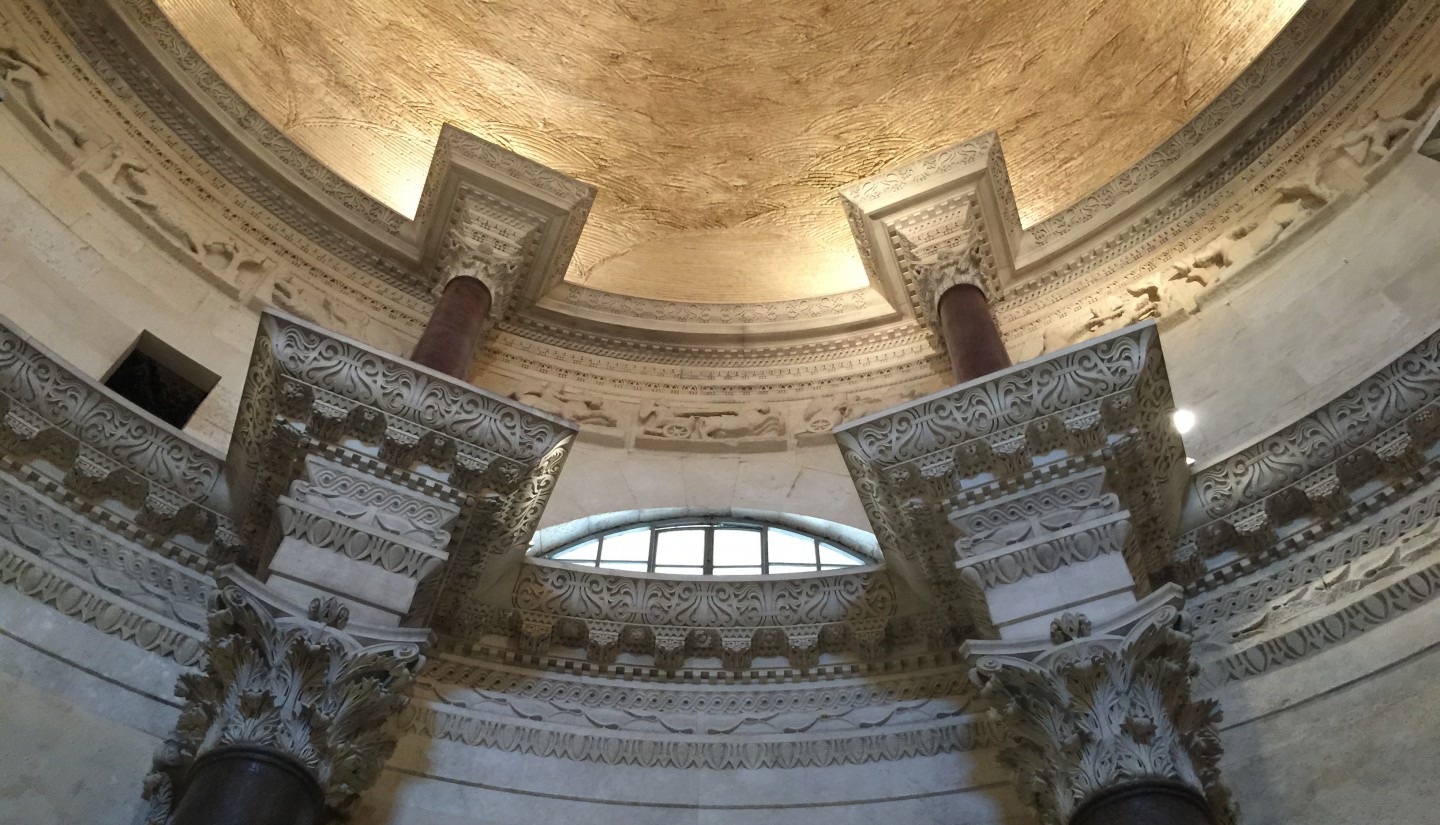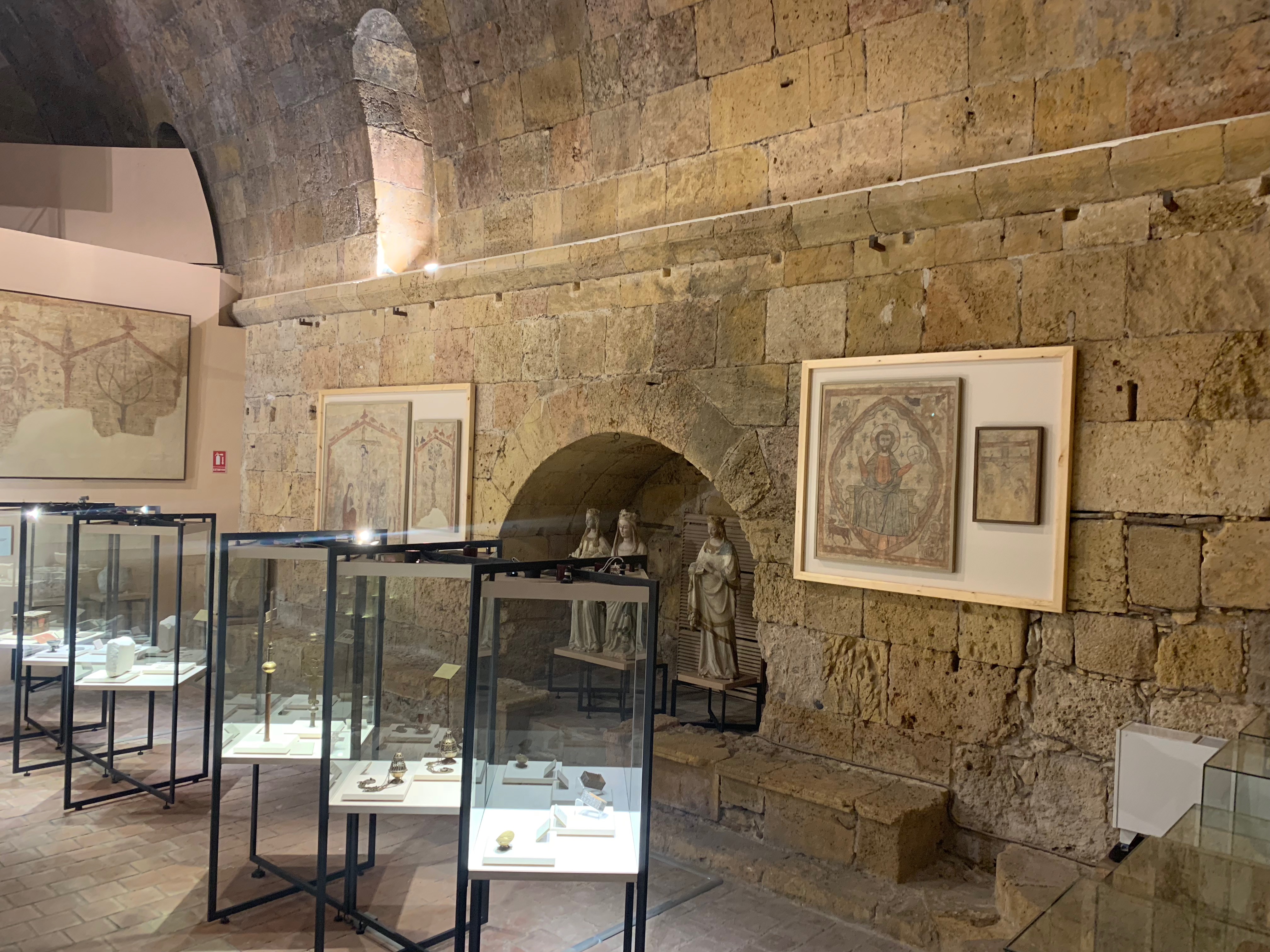Overall Impact: ***** 5 stars – Roman Thessalonica is, with Trier, the ‘go to’ site for remains of a Tetrarchic and Late Roman regional capital. The Arch of Galerius, together with his Palace and Mausoleum, give a sense of the grandeur and power of what was essentially a militarised state. The earlier Forum is large and well displayed.
Access *** 3 stars – Thessaloniki is Greece’s second city and the sites are scattered around a busy modern metropolis. So they are easy to access, with plentiful refreshment stops – but expect to walk some miles in the sun!
Atmosphere ** 2 stars – You will need to use your imagination to recreate the Roman City. Crowds and traffic surround the Arch of Galerius, which is missing large parts and heavily eroded by pollution
Other **** 4 stars – There is something about Thessaloniki with its weight of Macedonian, Roman, Byzantine, Ottoman, Jewish and Greek history that gives it a special feel.

Thessaloniki (Thessalonica or Salonica) was founded in 315BC by King Cassander of Macedonia, and named by him his wife (Alexander the Great’s half-sister) Thessalonike. In 148BC the City became the capital of the Province of Macedonia which the Romans had conquered in 168BC. In 41BC under Mark Anthony’s eastern regime the City gained free status.

The position of Thessaloniki is second only to Byzantium/Constantinople in the Region. The Via Egnatia from Dyrrhachium on the Adriatic to Byzantium on the Bosphorus runs through Thessaloniki. It is also at the southern Aegean Sea end of the principal north-south route through the Balkans along the Morava and Axios river valleys. It has a natural harbour opening onto sea-routes along the east coast of Greece and down to the Aegean Islands. Thessaloniki prospered greatly under the Principate and the principal visible remains of that period are to be seen in the Forum, which occupies a large area of the central City.
Having been a classical – in every sense of the word – Romanised Greek trading city during the Principate, the success of Christianity and the establishment of the militarised Dominate made Thessaloniki one of the most important imperial and therefore military bases of the late Empire.

The principal remains of the Dominate, or Late Empire, result from the decision of Galerius to make it his capital under the Tetrarchy. Galerius was the trusted military colleague of the Augustus Diocletian and was appointed as his Caesar in 293AD. He successfully fought the Sassanid Empire, sacking Ctesiphon in 299AD, and defeated the Carpi across the Danube in 297 and 300AD. Like Diocletian an enthusiastic persecutor of Christians, Galerius belatedly issued the Edict of Toleration in 311AD before dying horribly, probably of gangrene – a fate celebrated by Lactantius in ‘The Deaths of the Persecutors’ (De Mortibus Persecutorum).
It is to Galerius that we owe the triumphal arch, palace and mausoleum which taken together rival Trier as the most impressive remains of a Tetrarchic capital.

St Paul had visited the City on his Second Journey, visiting its chief Synagogue on three Sabbaths, and writing the First and Second Letters to the Thessalonians. As Christianity grew in strength it attracted both attention and persecution: Thessaloniki’s patron saint is the military martyr Saint Demetrius who was run through with spears on the the orders of the Emperor Galerius in 306AD. The relics of Saint Demetrius probably only arrived in the City when Sirmium was given up as the Army’s northern frontier base in 441/2AD. The Basilica dedicated to him was built in the mid-5th Century but was, alas, severely damaged in the Great Fire of 1917.
In 379AD the Emperor Theodosius divided the great Balkan and Danubian Prefecture of Illyricum in half, the eastern part having its capital in Thessaloniki. This meant that the defence of the Danube Frontier was split and this, in my view, caused a fundamental strategic weakening of Roman forces and focus in the key sector of the Frontier. It was the cause of continued strife between the Western and Eastern Empires. It is a division that has lasted and still today forms the dividing line between Orthodox and Roman Catholic Christianity; Serb and Croat; Cyrillic and Latin script.

The monuments of this third phase of Roman Thessaloniki are chiefly the churches. Chiefly, there is the Basilica of Sant Demetrius which appears to date from the mid-5th Century, but there are also other survivals: the Churches of the Acheiropoietos and of Hosios David date from the 5th Century. There are also the City Walls which have survived remarkably except on the sea-facing side. Although much knocked down and repaired over centuries of sieges, their core is of Late Roman brick and ashlar of c390AD.













